 W
WRabbi Isaac ben Abraham Aboab also known by his magnum opus, Menorat ha-Maor, was an early 14th century Spanish Talmudic scholar and Kabbalist. He is known for his intellectual approach to rabbinic literature, which he juxtaposed with contemporary Spanish Kabbalah.
 W
WGil Álvarez Carrillo de Albornoz more commonly Gil de Albornoz, was a Spanish cardinal, archbishop, Chancellor of Toledo and ecclesiastical leader. He was a descendant of the kings of León and Aragón and founder of the Collegio di Spagna, an academic institution of Bologna.
 W
WAlfonso Jofré Tenorio was the Admiral of Castile from 1314 until his death. He participated in a war against the Emirate of Granada in 1316, and led a blockade in 1326 during which he defeaed the Granadan-Marinid fleet. In 1333 he participated in the defense of Gibraltar against a Marinid-Granadan siege, but Castile was defeated and he signed a 1334 treaty that formalised the cession of the town. He died in a naval battle against the Marinid fleet of Abu al-Hasan Ali on the Strait of Gibraltar.
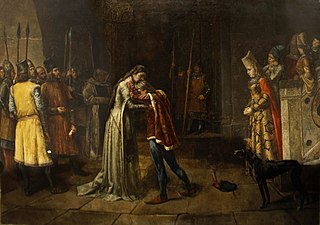 W
WFadrique Alfonso of Castile, 1st Señor de Haro (1334–1358), 25th Master of the Order of Santiago (1342–1358), was the fifth illegitimate child of Alfonso XI of Castile and Eleanor of Guzman. He was born in Seville.
 W
WJuana Manuel was queen consort of Castile from 1369 until 1379. She also was the heir of Escalona, Villena, Peñafiel and Lara, as well as Lady of Biscay.
 W
WCatherine of Lancaster was Queen of Castile by marriage to King Henry III of Castile. She governed Castile as regent from 1406 until 1418 during the minority of her son.
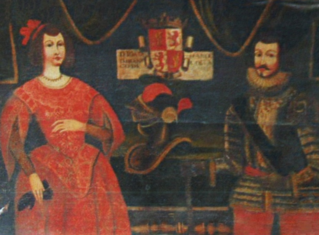 W
WBlanca de la Cerda y Lara was a Spanish noblewoman.
 W
WMaria de la Cerda y de Lara was the youngest daughter of Fernando de la Cerda and his wife Juana Núñez de Lara. Maria was a member of the Castilian House of Burgundy. By her second marriage she was Countess of Alençon.
 W
WAlfonso de la Cerda,, called "the disinherited," was the elder son of Ferdinand de la Cerda and his wife Blanche of France, and was a grandson of Alfonso X of Castile. Alfonso and his brother Fernando were candidates for the Castilian-Leonese crown during the reigns of Sancho IV of Castile, Ferdinand IV of Castile and Alfonso XI of Castile. In 1331, Alfonso renounced his rights and swore allegiance to Alfonso XI of Castile.
 W
WJuan Alfonso de la Cerda was Lord of Gibraleón, Huelva, Real de Manzanares and Deza.
 W
WLuis de La Cerda, also called Louis of Spain was an expatriate royal prince of the Crown of Castile, who lived and served in the Kingdom of France. Among his titles, Luis de la Cerda was the count of Talmont, count of Clermont and an admiral of France. He was also made the first 'Prince of Fortuna' by Pope Clement VI in 1344, although he never actually set foot on the islands.
 W
WConstance of Castile was claimant of the Castilian throne after the death of her father Peter, King of Castile and León, also known as Peter the Cruel. Her mother was María de Padilla, whom Peter had secretly married, but was then forced to repudiate; however he kept her as his mistress.
 W
WConstance of Portugal, was Queen of Castile by her marriage to Ferdinand IV.
 W
WEleanor, 3rd Countess of Alburquerque became Queen consort of Aragon by her marriage to Ferdinand I of Aragon. In Spanish, she is known as Leonor Urraca de Castilla, condesa de Alburquerque.
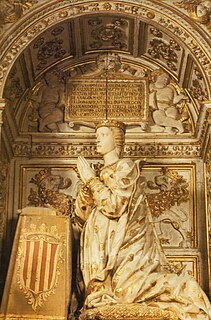 W
WEleanor of Aragon was a daughter of King Peter IV of Aragon and his wife Eleanor of Sicily. She was a member of the House of Barcelona and Queen of Castile by her marriage.
 W
WEleanor of Castile (1307–1359) was Queen of Aragon as the wife of King Alfonso IV from 1329 until 1336.
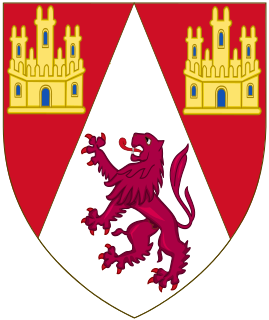 W
WAlfonso Enríquez, also known as Alonso Enríquez was Lord of Medina de Rioseco and Admiral of Castile.
 W
WFernán Pérez de Andrade or Fernán Peres d'Andrade was a Galician knight. His birthdate is unknown but is presumably before 1330. His death date fell between July 28 and August 21, 1397. The fourth son of Ruy Freyre de Andrade and Inés Rodriguez de Sotomayor, he belonged to a family associated with the knights of the Orden de la Banda since its founding by Alfonso XI of Castile in 1332. He was married to Sancha Rodríguez, daughter of Aras Pardo and Tareyga Affonso, and with whom he was known to have had two daughters, Maria and Inés Fernández, nuns of the Order of Saint Clare, and a son who died at an early age, leaving the family without a direct male heir.
 W
WMariana Fernández de Córdoba y Ayala, also known as Mariana de Ayala Córdoba y Toledo, was the fourth Lady of Casarrubios del Monte in the province of Toledo. She was the daughter of Diego Fernández de Córdoba y Carrillo, first Lord of Baena, and Inés Ayala y Toledo, third Lady of Casarrubios del Monte.
 W
WGarci López de Padilla was a Spanish noble of the House of Padilla. He was the fifteenth Grand Master of the Order of Calatrava from 1296 - 1322. He is best known for his command of the Castilian forces at the Siege of Gibraltar and his participation in the greater campaign against the Kingdom of Granada undertaken by Ferdinand IV of Castile in 1309.
 W
WMartim Gonçalves de Lacerda (14th-century) was a Castilian nobleman. He came to Portugal in times of John I, serving as a vassal of the Royal House.
 W
WRuy González de Clavijo was a Castilian traveller and writer. In 1403-05 Clavijo was the ambassador of Henry III of Castile to the court of Timur, founder and ruler of the Timurid Empire. A diary of the journey, perhaps based on detailed notes kept while traveling, was later published in Spanish in 1582 and in English in 1859.
 W
WEleanor de Guzmán (Leonor) (1310–1351) was a Castilian noblewoman and long-term mistress to Alfonso XI of Castile. She was the mother of King Henry II of Castile.
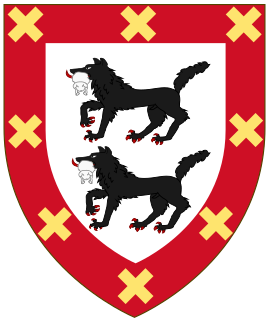 W
WFernando Díaz de Haro was a Spanish noble of the House of Haro. He was the second born son of Diego López V de Haro, the Lord of Biscay, and his wife, the infanta Violante de Castilla y Aragón, daughter of Alfonso X of Castile. Fernando became lord of Orduña and Balmaseda in 1322, after the death of his brother, Lope Díaz IV de Haro who died without leaving any descendants.
 W
WMaría Díaz I de Haro "the Good" was a Spanish noblewoman of the House of Haro. She was the daughter of Lope Díaz III de Haro who was assassinated by order of the king at Alfaro, La Rioja. She is best known for being the Lady of Biscay and for her lifelong battle against her uncle, Diego López V de Haro, for the title of the lordship of Biscay.
 W
WMaría Díaz II de Haro was a Spanish noble of the House of Haro. She was the daughter of Juan de Castilla y Haro and his wife, Isabel of Portugal and was Lady of Biscay from 1334 until her death in 1348.
Isabella of Castile, Duchess of York was the daughter of King Peter and his mistress María de Padilla. She accompanied her elder sister, Constance, to England after Constance's marriage to John of Gaunt, 1st Duke of Lancaster, and married Gaunt's younger brother, Edmund of Langley, 1st Duke of York.
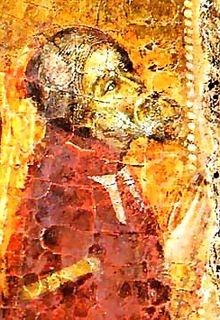 W
WDon Juan Manuel was a Spanish medieval writer, nephew of Alfonso X of Castile, son of Manuel of Castile and Beatrice of Savoy. He inherited from his father the great Seigneury of Villena, receiving the titles of Lord, Duke and lastly Prince of Villena. He married three times, choosing his wives for political and economic convenience, and worked to match his children with partners associated with royalty. Juan Manuel became one of the richest and most powerful men of his time, coining his own currency as the kings did. During his life, he was criticised for choosing literature as his vocation, an activity thought inferior for a nobleman of such prestige.
 W
WDon Pero López de Ayala (1332–1407) was a Castilian statesman, historian, poet, chronicler, chancellor, and courtier.
 W
WMaria of Portugal was a Portuguese princess who became Queen of Castile upon her marriage to Alfonso XI in 1328. She was the first daughter of King Afonso IV of Portugal and his first wife Beatrice of Castile.
 W
WGarcía Méndez de Sotomayor or Garcí Méndez II de Sotomayor, the second of his name was a Castilian noble and head of the Méndez branch of the House of Sotomayor who founded the Señorio del Castillo de Carpio.
 W
WMaría Alfonso Téllez de Meneses, known as María de Molina, was queen consort of Castile and León from 1284 to 1295 by marriage to Sancho IV of Castile, and served as regent for her minor son Ferdinand IV and later her grandson Alfonso XI of Castile (1312-1321).
 W
WMaría Díaz de Padilla was the mistress of King Peter of Castile.
 W
WPaul of Burgos was a Spanish Jew who converted to Christianity, and became an archbishop, Lord Chancellor, and exegete. He is known also as Pablo de Santa Maria, Paul de Santa Maria, and Paulus episcopus Burgensis. His original name was Solomon ha-Levi.
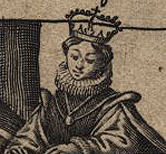 W
WConstanza Manuel of Villena was the daughter of Castilian nobleman and writer Don Juan Manuel (1282–1348), Duke of Peñafiel, and his second wife Constance of Aragon, daughter of James II of Aragon.
 W
WSamuel ben Meir Ha-Levi Abulafia, was the treasurer of king Pedro I "the Cruel" of Castile and founder of the Synagogue of El Transito in Toledo, Spain.
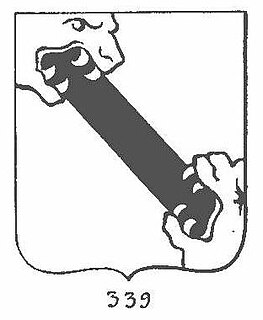 W
WFernando (or Fernán) Sánchez de Tovar, 1st Lord of Belves was a significant Castilian soldier and Admiral of the Middle Ages.
 W
WSancho Alfonso of Castile (1342–1374), known in Spanish as Don Sancho Alfonso de Castilla, was Infante of Castile, 1st Count of Alburquerque.
 W
WDon Juan de Tovar y Toledo, 3rd Lord of Cevico and Boca de Huérgano and later 1st Lord of Caracena (c.1370-1415) was a Castilian nobleman and military leader, the eldest son of Sancho de Tovar, 2nd Lord of Cevico, and his wife Teresa de Toledo, and great-grandfather of Portuguese-naturalized navigator and explorer Sancho de Tovar.